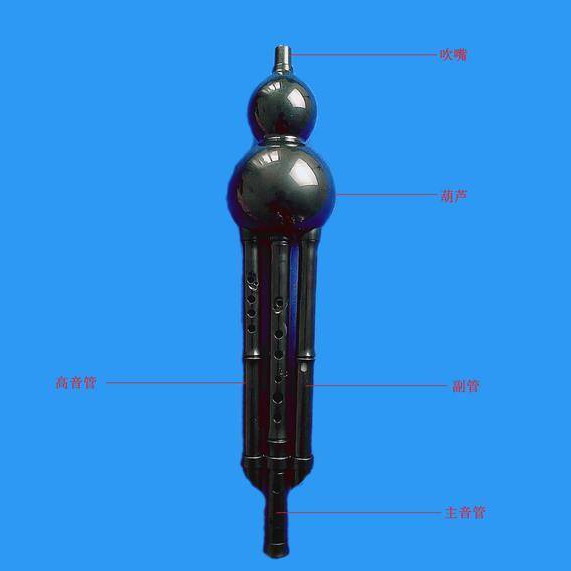How to play polyphonic Hulusi
Three distinct advantages of polyphonic cucurbit
Multi-tone Hulusi is a new type of Hulusi, which is a major reform and progress in the development history of Hulusi. Multi-tone Hulusi has the following three significant advantages:
Advantage 1: Wide range of sound, you can play two octaves and one more note
In addition to playing all the scales of the traditional seven-hole Hulusi, namely Bass 3, Bass 4, Bass 5, Bass 6, Bass 7, Middle 1, Middle 2, Middle 3, Middle 4, Middle Tone 5, Alto 6, Polyphonic Hulusi can also play Alto 7, Treble 1, Treble 2, Treble 3 and Treble 4.
Advantage 2: Various means of expression, can play chords and polyphony
Since the main tube and the soprano of the polyphonic Hulusi can play different scales at the same time, the soprano can play alto 4, alto 5, alto 6, alto 7, treble 1, treble 2, treble 3 and treble 4 , Therefore, the main pipe and the treble pipe cooperate, so that the polyphonic Hulusi can play chords and polyphony.
Advantage 3: Keeping the traditional cucurbit playing habit, you can get started directly
Compared with the main pipe of traditional seven-hole cucurbit, the structure and playing method are basically the same, the only difference is the polyphonic cucurbit The main tube of the silk has an articulation hole for the alto 4. Therefore, the multi-tone cucurbit flute keeps the traditional seven-hole cucurbit flute playing habit and can be used directly.

How to play polyphonic cucurbit
1. Three ways to play the mouthpiece
There is a mouthpiece installed on the gourd of the multi-tone cucurbit flute.
(1) Blowing supervisor
When blowing the mouthpiece of the main sound pipe, the lower lip blocks the mouthpiece of the high sound pipe, and the main pipe can be blown.
(2) Blowing the soprano
When blowing the mouthpiece of the soprano pipe, the upper lip blocks the mouthpiece of the main sound pipe, and the soprano pipe can be blown.
(3) Play chords and polyphony
By blowing the tonic mouthpiece and the soprano mouthpiece at the same time, the tonic pipe and the soprano pipe can be pronounced at the same time, and with fingering, chords and polyphony can be played.
2. How to hold polyphonic Hulusi
The multi-tone cucurbit flute is held in the same way as the traditional seven-hole cucurbit flute. Only when playing the treble pipe, the right hand moves up to the treble pipe, and the finger can be played by pressing the sound hole of the treble pipe.
If you are left-handed, the hand holding method of Polyphonic Hulusi is just the opposite of the above method.
 渝公网安备 50010702504639号
渝公网安备 50010702504639号